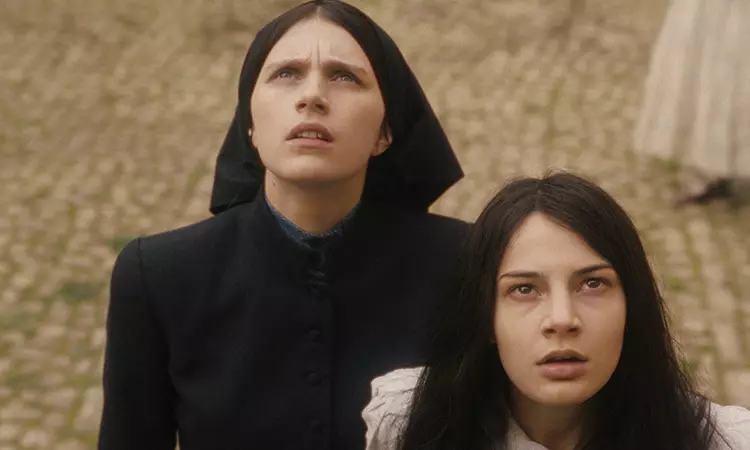For enthusiasts of Richard Donner’s iconic horror film, The Omen (1976), the opening scenes of The First Omen usher in a chillingly nostalgic atmosphere. The film begins with a haunting musical score, overcast skies, and bare branches swaying menacingly in the wind. This introductory tableau effectively establishes the film’s tone, evoking both familiarity and an unsettling aura. While the absence of the infamous Guildford Cathedral may leave some viewers yearning for that particular touchstone, the ambiance of dread continues to permeate this latest chapter in the franchise. Directed by Arkasha Stevenson, this feature debut invites viewers back into the enigmatic world of demonic lore, albeit with a fresh narrative spin.
Set against the backdrop of Rome in 1971, The First Omen seeks to unravel the origins of the enigmatic Damien portrayed in its predecessor. The story centers on Margaret, played by Nell Tiger Free, who arrives in Italy from America with aspirations of joining a convent. Her duties involve interacting with a teenage girl stationed at an orphanage, known for her disturbing behavior. As Margaret’s curiosity deepens—particularly after a cryptic meeting with Father Brennan, portrayed by Ralph Ineson—she navigates a labyrinthine path of supernatural intrigue that escalates into treacherous territory.
Stevenson tactfully weaves connections back to the original film, preserving continuity particularly well with the timeline. Ineson’s portrayal of a younger Father Brennan evokes memories of Patrick Troughton’s earlier performance while also presenting a humorous twist with his Yorkshire accent attempting an Irish lilt. The film’s last moments cleverly mirror those of the 1976 classic, effectively drawing a line between the two narratives.
One of the more compelling aspects of The First Omen is its deliberate emphasis on the female perspective, particularly concerning motherhood. As the story unfolds, it juxtaposes the concept of creation with the horror that often lurks within. Scenes depicting childbirth are imbued with a distinctly feminine viewpoint, offering a fresh take on traditional horror tropes. Here, Bill Nighy’s character, a terminally perplexed priest, quips about the “messiness” of life, hinting at the thin veil separating joy from darkness.
This nuanced portrayal enriches the narrative, allowing audiences to engage with themes of maternal instinct intertwined with the malevolent forces at play. It emphasizes the centrality of women in the story without resorting to clichés, showcasing complex characters fueled by emotional depth rather than simply serving as plot devices.
Despite its strengths, The First Omen is not without significant flaws. The film generally succeeds in cultivating a steady atmosphere of tension without over-relying on jump scares. However, it occasionally erodes its own suspense with excessive exposition. A prime example is a pivotal scene following a car accident, where the graphic nature of the aftermath divulges more than necessary. This tendency undermines the intended suspense and risks disengaging viewers who prefer subtler cues.
Nevertheless, the film ultimately triumphs through its dedication to atmosphere, respect for the original, and impressive performances, particularly from Nell Tiger Free. Her commitment to conveying her character’s physical and emotional turmoil adds layers to a story already laden with tension.
As the summer months usher in a wave of sequels, prequels, and reboots, The First Omen stands out as a noteworthy contender in the horror genre. While it grapples with some missteps in execution, its accomplishments—in terms of atmospheric storytelling, a focus on female experiences, and solid performances—suggest that it could emerge as one of the finest iterations in the longstanding franchise. Arkasha Stevenson has set a commendable stage for future narratives while resurrecting the ominous charm of the original, welcoming both old fans and new audiences back into the fold of chilling folklore.

